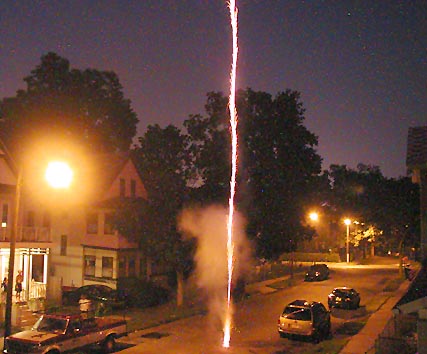
Springfield resident and sound expert Herb Singleton traveled to Honolulu, Hawaii last month to talk at an international conference about one of our city’s quality-of-life issues: perceptions of noise nuisance. His presentation was captured in a paper (PDF) he composed and has made available on his Web site. From the paper:
Effects from noise reported by residents include sleep awakenings, speech interference, and disturbance from rattles caused by air-borne vibration. The city ultimately decided to place an emphasis on noise enforcement by proposing to increase noise violation fines and by encouraging the police department to aggressively pursue noise complaints. However, two unexpected problems arose:
1. Opposition emerged from the minority community over perceptions that the police would unfairly target minorities for noise infractions; and
2. Despite the encouragement of city officials, there has been a lack of enforcement from police officers because of limited resources and the perception that noise is not a priority matter.


Singleton continues, a bit further on:
Discussions with city residents, business owners and city officials have revealed that most residents are unaware of [the city’s] noise regulations [including three state and one local]. Of those who were aware of the regulations, most do not have a qualitative understanding of the absolute noise levels, nor did they have an understanding of the technical aspects of the limits (for example, the difference between A-weighted measurements and unweighted measurements).
While police officers are aware of the “plainly audible” language in the Springfield ordinance, some officers feel that noise citations issued without the use of a sound level meter are more likely to be dismissed in hearings. As a result, many officers tend to issue warnings for noise violations in all but the most extreme cases. The police department is equipped with sound level meters, but they are rarely used because of calibration and maintenance requirements.
Singleton’s paper goes on to compare and contrast different neighborhoods‘ response to the evolving perceived noise problem in the city, and says that proposed solutions to address those problems likely failed to gain much public support because of the uneven distribution of the problem, compounded by a lack of hard data or information about the health issues surrounding noise considerations. He adds that more coordination among neighborhood groups, early on, may have helped the process of creating a noise ordinance "go more smoothly."

Last spring’s public meetings, which were held at multiple times around the city, made a positive difference, Singleton says, but he adds that residents appeared unaware of the potential for helpful input from acoustical engineers or non-profit organizations that specialize in noise control. Residents he spoke to "believed that the involvement of experts would help skeptics understand that the adverse effects from noise are real and can be objectively quantified."
Singleton ends with three recommendations: 1) education about the health effects of noise; 2) increased awareness about the availability of expertise on sound to help implement policy or target specific technical problems—he mentions the National Council of Acoustical Consultants, the Institute of Noise Control Engineering (which co-hosted the Hawaii conference), and the Noise Pollution Clearinghouse; and 3) improved enforcement methods and technologies. On this last point, Singleton writes:

Sound level meters (at left), when used by trained personnel, are excellent tools to quantify and document sound levels. However, precision sound meters are expensive and require training for proper operation. Therefore, police and noise enforcement officers often rely on “plainly audible” standards to determine noise exceedances.
Because of the perception that “plainly audible” standards are subjective, there is a belief that citations issued using this method may not withstand scrutiny. There is also a perception that “plainly audible” is subject to abuse, particularly in locations where tensions between the community and the police run high. For the public to have confidence in the fairness of enforcement, simpler objective methods are needed to document noise violations with empirical data.


